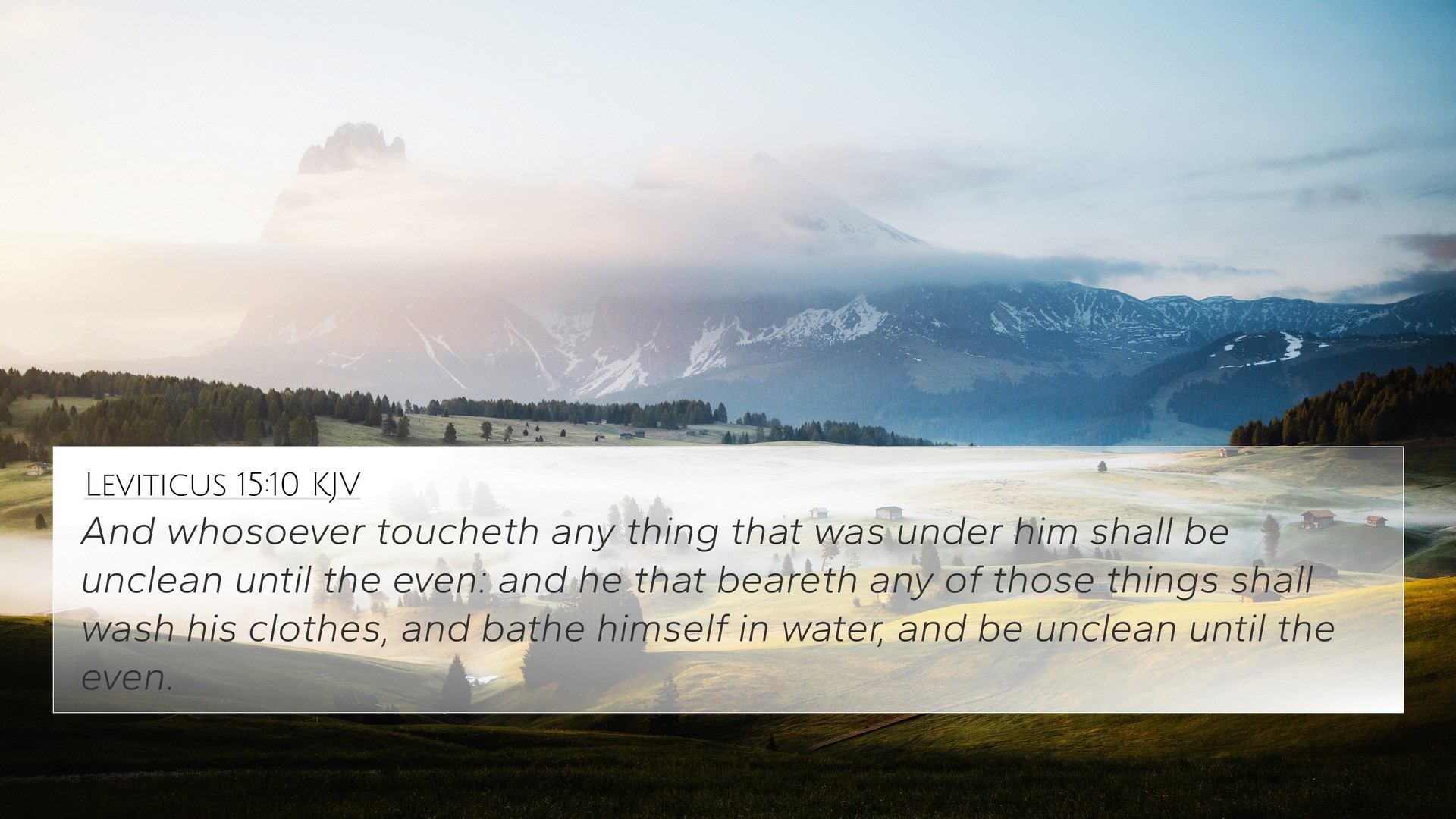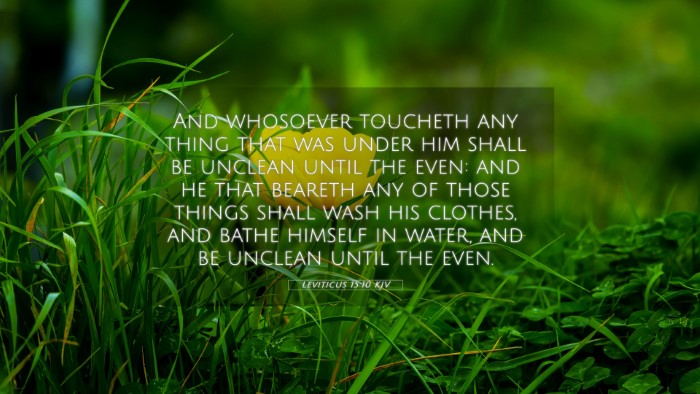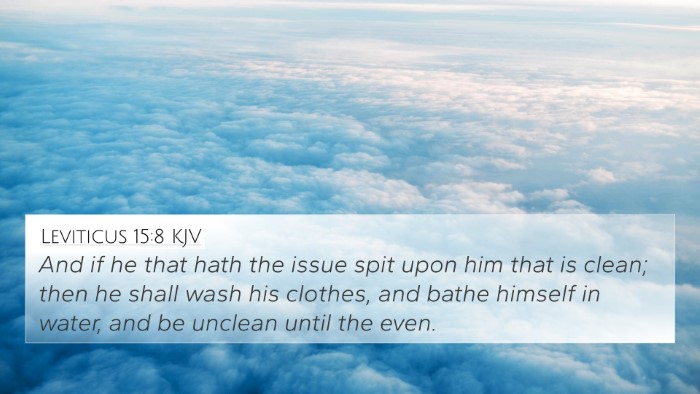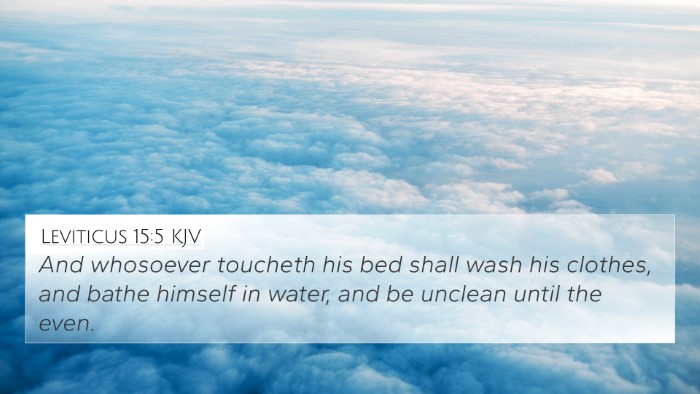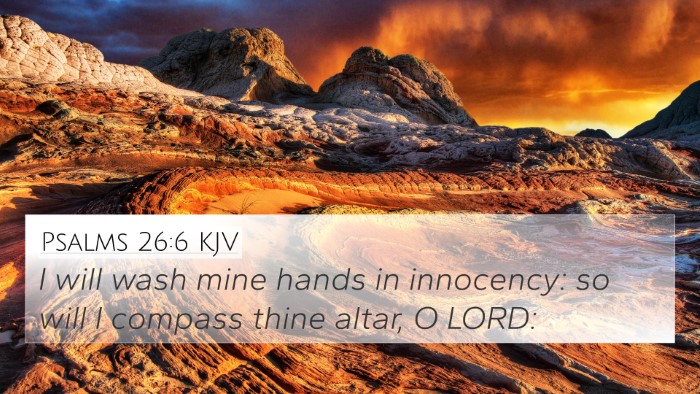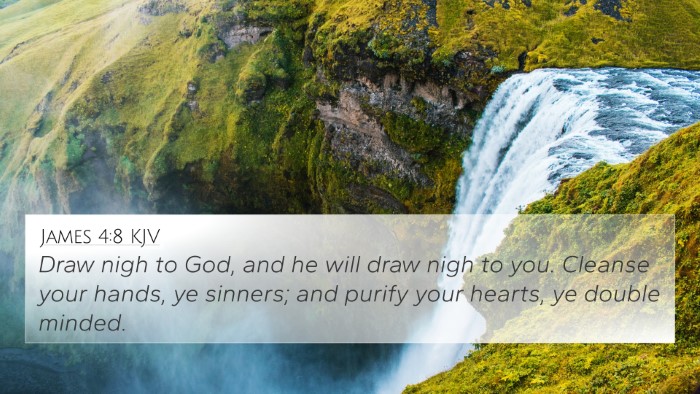Understanding Leviticus 15:10
Leviticus 15:10 states, "And whosoever touchest anything that was under him shall be unclean until the even; and he that beareth those things shall wash his clothes, and bathe himself in water, and be unclean until the even." This verse addresses the laws regarding cleanliness and ritual purity, emphasizing the importance of maintaining holiness within the community.
Context and Overview
The chapter outlines various laws concerning cleanliness related to bodily discharges, touching unclean items, and the procedures for purification. These regulations aimed to promote both physical cleanliness and spiritual holiness among the Israelites. The concept of being "clean" or "unclean" plays a significant role in the religious life of the Israelites.
Key Themes
- Ritual Purity: The necessity for maintaining ritual purity within the community.
- Consequences of Contact: The implications of touching items associated with impurity.
- Responsibility for Cleanliness: Individuals bear the responsibility to restore their cleanliness through specific actions.
Bible Verse Cross-References
Leviticus 15:10 connects with several other scriptures that address themes of purity and cleanliness. Key cross-references include:
- Numbers 19:11-22: Discusses laws regarding touching a dead body and the resulting uncleanness.
- Leviticus 11:24-28: Outlines which animals are considered clean and unclean, affecting dietary laws.
- Hebrews 9:13-14: Reflects on the purification related to the Old Testament laws and their fulfillment in Christ.
- Matthew 23:25-26: Jesus rebukes the Pharisees for focusing on external cleanliness while neglecting inner purity.
- Acts 10:14-15: God shows Peter a vision altering the understanding of clean and unclean, relating it to the spread of the Gospel.
- 2 Corinthians 7:1: Encourages believers to cleanse themselves from every defilement, promoting spiritual purity.
- 1 John 1:9: Teaches about confession and the cleansing from sin, aligning with the principle of ritual purity.
Comparative Bible Verse Analysis
The connections between Bible verses enrich our understanding of purification principles throughout scripture. In Leviticus, physical cleanliness foreshadows spiritual purity. New Testament references expand this idea by relating it to the work of Jesus Christ, emphasizing that true purity comes not from external adherence to laws, but from internal transformation through faith.
Inter-Biblical Dialogue
The dialogue between Old and New Testament teachings concerning purity reflects a development in understanding God's laws. While the Old Testament provides the foundational context for ritual cleanliness, the New Testament reveals Christ as the ultimate purifier, fulfilling and transcending these laws. This intertextual relationship is fundamental for interpreting the broader biblical narrative.
Bible Reference Resources
For those studying these connections, using tools for Bible cross-referencing can be invaluable. Resources like a Bible concordance or a Bible cross-reference guide can assist learners in exploring these themes further and identifying biblical parallels.
How to Use Bible Cross-References
The process of understanding scripture through cross-referencing includes identifying identical themes, comparing contexts, and recognizing the continuity across biblical texts. For instance, when examining Leviticus 15:10, one might look at corresponding verses about cleanliness, as discussed earlier, to see how these laws informed the actions and teachings of Christ.
Conclusion
Leviticus 15:10 serves as a vital piece of the mosaic of biblical teachings on purity and holiness. Its implications resonate beyond ancient Israelite society into the life of modern believers. By exploring connections between Bible verses, one not only gains insight into the law's original intention but also into its fulfillment through Christ, thereby enriching one's faith and understanding.
